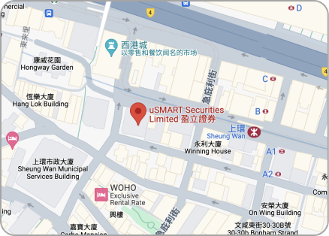Types of orders supported by uSMART in Hong Kong market
uSMART support:At-auction Order, At-auction Limit Order, Trigger Order, Enhanced Limit Order, Odd Lot Order and Smart orders。
1. At-auction Order
At-auction Order is an order with no specified price and is entered into the trading system for execution at the final Indicative Equilibrium Price (IEP). It enjoys a higher order matching priority than an at-auction limit order and will be matched in time priority at the final IEP. Any outstanding at-auction orders after the end of the Pre-opening Session will be canceled before the commencement of the Continuous Trading Session.
2. At-auction Limit Order
At-auction Limit Order is an order with a specified price. An at-auction limit order with a specified price at or more competitive than the final IEP (in case of buying, the specified price is equal to or higher than the final IEP, or in case of selling, the specified price is equal to or lower than the final IEP) may be matched at the final IEP subject to availability of eligible matching order on the opposite side. An at-auction limit order will be matched in price and time priority at the final IEP. No at-auction limit order will be matched at a price worse than the final IEP. Any outstanding at-auction limit orders at the end of the Pre-opening Session will be carried forward to the Continuous Trading Session and treated as limit orders provided that the specified price of that at-auction limit order does not deviate nine times or more from the nominal price or is one ninth or less of that price. Such orders will be put in the price queue of the input price.
3. Trigger Order
Trigger Order is any event that meets the criteria to initiate an automated securities transaction that does not require additional trader input. Trigger Order is usually a market condition, such as a rise or fall in the price of an index or security, which triggers a sequence of trades. Trade triggers are used to automate certain types of trades, such as the selling of shares when the price reaches a certain level.
4. Enhanced Limit Order
An enhanced limit order will allow matching of up to 10 price queues (i.e. the best price queue and up to the 10th queue at 9 spreads away) at a time provided that the traded price is not worse than the input price. The sell order input price cannot be made at a price of 10 spreads (or more) below the current bid price whereas the buy order input price cannot be made at a price of 10 spreads (or more) above the current ask price.
Any outstanding enhanced limit order will be treated as a limit order and put in the price queue of the input price.
5.“Odd Lot”Order
“Odd Lot” commonly refers to a quantity of securities that is less than one
trading unit (i.e. one board lot). Our “Odd Lot” Order Service allows you to
sell odd lot during trading day 9:30~16:00.
6.Smart orders
There are four types of smart orders provided by uSMART which is “Take-Profit Order”, “Stop-Loss Order”, “Buy at a Low Price” and “Sell at High Price”.
- Take-Profit Order: The order will be placed for selling stock according to investor’s preset increased stock price ratio. It is usually set for locking the profit when the stock price rises;
- Stop-Loss Order: It is opposite to Take-Profit Order. The order will be placed for selling stock according to investor’s preset decreased stock price ratio. It is usually set for preventing significant loss when the stock price falls;
- Buy at a Low Price: It is usually set when investors are optimistic about a certain stock for buying stock price at low price. The order will be placed buying stock if the investor’s preset price is reached.
- Sell at High Price: The order will be placed for selling stock at high price if the investor’s preset price is reached. It differs to “Take-Profit Order” in the aspect that “Stop-Loss Order” is set in terms of ratio while “Sell at High Price” is set in terms of price. The same point is that both “Take-Profit Order” and “Sell at High Price” is set for locking the profit.


